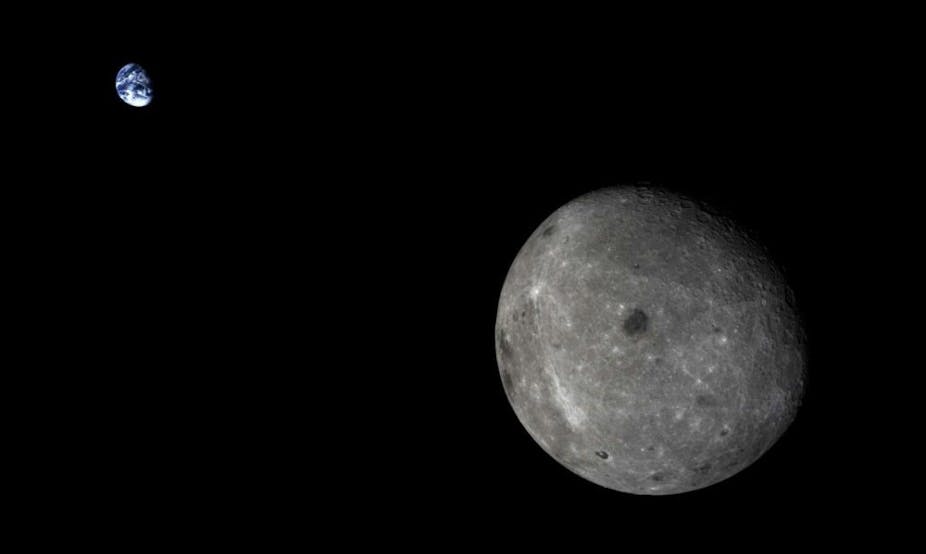The final week in October was widely reported as having been disastrous for space exploration. First we had the explosion of the crewless Antares launcher as it lifted off to take provisions to the International Space Station (ISS). Then there was the loss of Virgin Galactic’s SpaceShipTwo over the Mojave Desert on a test flight.
The pilot of SpaceShipTwo died in the accident, and the pilot of White Knight Two, the carrier of SpaceShipTwo, was seriously injured. No results are yet forthcoming from investigations into the disasters, but there has been much speculation as to what the two accidents mean for the future of space exploration.
However, it hasn’t all bad news. Almost at the same time as the SpaceShipTwo catastrophe was happening, a crewless Chinese spacecraft, Chang’e 5-T1, named Xiaofei (that is “little flyer”), re-entered Earth’s atmosphere and landed safely in the Mongolian desert. (Chang’e is the Chinese goddess of the moon)
China is only the third nation, alongside the US and Russia, to send a spacecraft to the moon and have it returned safely. Xiaofei is the latest part of China’s 3-stage lunar space programme, which started with the lunar orbiters Chang’e 1 and Chang’e 2 in 2007 and 2010. Stage two of the programme, a lunar lander, was achieved when Chang’e 3 landed on the moon in December 2013. A rover, Yutu (or Jade Rabbit) was deployed onto the surface.
Xiaofei was a mission designed to test technology for stage three of the Chinese lunar programme: a lunar sample-return mission. With safe return of the capsule, China now has all the technologies in place to prepare for the full mission.
As well as being successful, Xiaofei captured a scene which is likely to become an iconic image in the future: the spacecraft photographed the Earth and the moon together, showing the far side of the moon.
We should also remember that there are six astronauts currently on board the ISS. They are clearly taking inspiration from their surroundings and have used social media to share images of Earth.
The past week has shown that space exploration has to be a partnership between governments and the private sector. Space agencies, such as NASA in the US and ESA in Europe, are funded by governments, but they buy rocket launches from private companies such as Arianespace.
NASA has its own rocket launchers, but they are powered by engines built by corporations such as Boeing and McDonnell Douglas. Companies like Space X, Virgin Galactic and Orbital Sciences Corporation have worked closely with NASA. They often have ex-NASA employees on their staff. NASA is also unable to service all its required launches to the ISS, hence its contracting out of missions to private companies.
Government space agencies and private companies have one thing in common: they need highly skilled and well-trained scientists and engineers. Unfortunately, there seems to be a constant cry for more ways to persuade school students to follow careers in science and engineering to fill up such positions.
Next week, we will follow, with some trepidation, deployment of Rosetta’s Philae lander on comet 67P. Over the past three months, we have been amazed and fascinated by close-up pictures of the comet’s surface as the spacecraft drew ever closer.
Along with images of the Earth and moon from Xiaofei, and of Aurora Borealis, the Aurora Australis and the atmosphere and oceans from the ISS, images from Rosetta remind us why there is a desire to go into space. Space exploration takes us beyond the narrow confines of our terrestrial home. The more we explore, the more we find we don’t know or understand – and how inspirational is that for the next generation?

